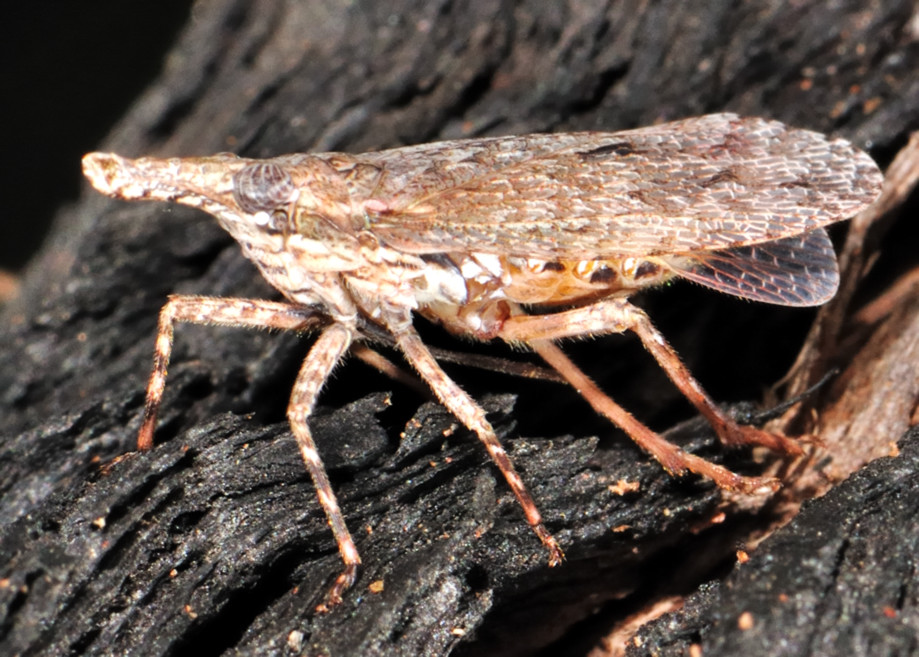

Adult spotted lanternflies are about an inch long and hold their spotted beige forewings in a tent-like manner over their bodies. The most important thing you can do is watch for spotted lanternfly and report any potential sightings to the appropriate organization in your province or territory. Residents who own infested trees face insecticide applications, increased cost and effort to clean up honeydew, and compromised enjoyment of outdoor activities. Honeydew also accumulates at the base of trees, creating the perfect breeding ground for bacterial and fungal growth, which is both gross and can cause more harm to an already weakened plant. This is an especially unpleasant problem in residential yards and public trails.

This causes SLF to excrete a sugary substance called honeydew – and thousands swarming in a tree cause this honeydew to “rain” from the canopy. All life stages of spotted lanternfly feed on phloem tissues (where plants circulate sugars), often by the thousands. While there have not been any reported tree deaths associated with spotted lanternfly, the way they feed creates unique and sticky problems. Spotted lanternfly may feed on many species of ornamental and forest trees, including red maple and black walnut. It is not just the Canadian agricultural industry that should be concerned. If spotted lanternfly were to arrive in Canada, Ontario’s $4.4 billion wine industry and $4.2 billion fruit and vegetable crops would both be at risk. Insecticide application in some vineyards and orchards in the affected areas have gone from four applications per season to up to 14 applications, increasing industry expenditures and potential costs to the environment (Urban et al.

Vineyards in Pennsylvania have experienced 45% – 100% loss of wine grape crops, such as Pinot Noir and Chardonnay, since the initial detection of spotted lanternfly in 2014. Fruit trees and grapevines are especially preferred hosts of spotted lanternfly. While this invasive insect has not been found in Canada, the proximity of Ontario to some New York detections, where individual adults were intercepted in shipments, is a major concern. It’s our job to make sure spotted lanternfly never gets to Canada. In Pennsylvania, where spotted lanternfly first became established, the infestation is so severe that quarantine zones have been established in 14 counties. Spotted lanternfly has been detected just across the border from Niagara Falls, Ontario in the Monroe and Erie Counties of New York. Spotted lanternflies feed on over 70 plant and tree species, depleting their sugar supply and causing ruined or mealy fruit in species such as grape and apple.

Spotted lanternfly ( Lycorma delicatula) is an insect from China that is considered an extremely destructive invasive species in North America. It is a severe threat to the $1.79 billion NSW horticulture industry.Have you heard of the brightly-coloured insect wreaking havoc across the mid-Atlantic United States? Spotted lanternfly feed on over 65 species of plants including important agricultural crops like grapes, apples, peaches, plums, walnuts, blueberries, cherries, basil, apricot, nectarines and walnuts. It is not known to be present in Australia. It was discovered in Pennsylvania in the United States in 2014 and has begun spreading rapidly. Spotted lanternfly is found in China, India, Japan, South Korea and Vietnam. Once established spotted lanternfly can spread short distances by walking, jumping or flying. Spotted lanternfly are hitchhikers that can spread long distances through the movement of infested material or items containing egg masses. Egg masses are yellowish-brown in color, covered with a grey, waxy coating prior to hatching. Nymphs in their early stages of development appear black with white spots and turn red before becoming adults. Their abdomen is yellow with black bands. Their hind wings are red with black spots at the front and white and black bars at the rear. They have striking wings that include light brown forewings with black spots and a speckled band at the rear. What does it look like?Īdult spotted lanternfly are approximately 25 mm long and around 12 mm wide. It can cause severe damage to crops like grapes, apples and stone fruit. Spotted lanternfly use their piercing and sucking mouthparts to feed on the sap of over 65 species of plants. The spotted lanternfly ( Lycorma delicatula) is a planthopper native to Southeast Asia.


 0 kommentar(er)
0 kommentar(er)
